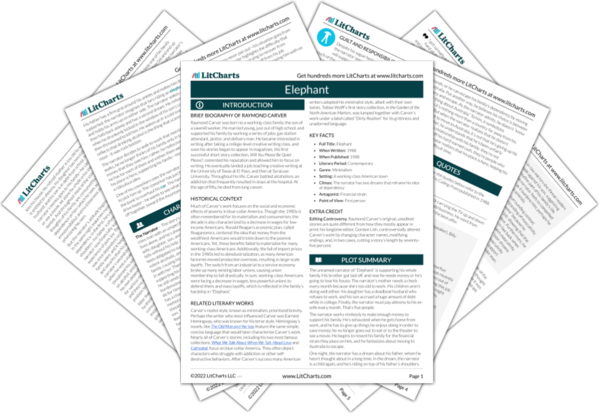Next
Summary
Elephant Study Guide |
Next
Summary
|
Welcome to the LitCharts study guide on Raymond Carver's Elephant. Created by the original team behind SparkNotes, LitCharts are the world's best literature guides.

Editing Controversy. Raymond Carver’s original, unedited stories are quite different from how they mostly appear in print: his longtime editor, Gordon Lish, controversially altered Carver’s work by changing character names, modifying endings, and, in two cases, cutting a story’s length by seventy-five percent.